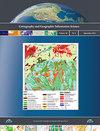利用GIS技术检测海图和新调查数据之间的差异
IF 2.4
3区 地球科学
Q1 GEOGRAPHY
Cartography and Geographic Information Science
Pub Date : 2022-11-11
DOI:10.1080/15230406.2022.2130823
引用次数: 3
摘要
摘要航海图是安全航行的关键,只要它们保持更新,并对其所描绘的现实值得信赖。海洋交通量的增加和现有数据的增长要求评估海图是否适当的过程既快速又有效,该过程包括将新调查的信息与主流制图中公布的信息进行比较。从这个意义上说,这项工作旨在自动检测海图和调查数据之间的差异,以最大限度地减少人力投入。我们开发了一个地理信息系统(GIS)位置模型,该模型基于从三个分析标准得出的特定规则:深度区域、最小测深和测深模型。该模型产生六个输出,每个标准两个,以支持人类的最终决策。我们已经在几次水文调查中测试了该模型,如开放水域和港口调查,并通过与其他可用方法(如当前的手动过程和海图充分性工具(CA Tools))的结果进行比较,成功地验证了该模型。还评估和讨论了与其他方法相比的潜在优势,验证了这种新方法在海图充分性和完整性评估中的有用性。我们的研究结果通过增强海图制作和维护的GIS技术带来了重要的好处。本文章由计算机程序翻译,如有差异,请以英文原文为准。
Detection of discrepancies between nautical charts and new survey data using GIS techniques
ABSTRACT Nautical charts are critical for safe navigation as long as they remain updated and trustworthy for the reality they depict. The increase in marine traffic and the growth of available data require that the process of assessing nautical chart adequacy, which consists of comparing information from a new survey with the one published in the ruling cartography, be both fast and effective. In this sense, this work aims to automate the detection of discrepancies between nautical charts and survey data to minimize human effort. We developed a Geographic Information System (GIS) location model based on specific rules derived from three analysis criteria: depth areas, minimum soundings, and bathymetric models. The model produces six outputs, two for each criterion, to support the ultimate human decision. We have tested the model in several hydrographic surveys, such as open waters and harbor surveys, and successfully validated it by comparing results with other available methods, such as current manual processes and Nautical Chart Adequacy Tools (CA Tools). Potential advantages over other methods are also evaluated and discussed, validating the usefulness of this novel approach for the adequacy and completeness evaluation of nautical charts. Our results deliver important benefits by enhancing the GIS techniques for nautical chart production and maintenance.
求助全文
通过发布文献求助,成功后即可免费获取论文全文。
去求助
来源期刊
CiteScore
5.20
自引率
20.00%
发文量
23
期刊介绍:
Cartography and Geographic Information Science (CaGIS) is the official publication of the Cartography and Geographic Information Society (CaGIS), a member organization of the American Congress on Surveying and Mapping (ACSM). The Cartography and Geographic Information Society supports research, education, and practices that improve the understanding, creation, analysis, and use of maps and geographic information. The society serves as a forum for the exchange of original concepts, techniques, approaches, and experiences by those who design, implement, and use geospatial technologies through the publication of authoritative articles and international papers.

 求助内容:
求助内容: 应助结果提醒方式:
应助结果提醒方式:


